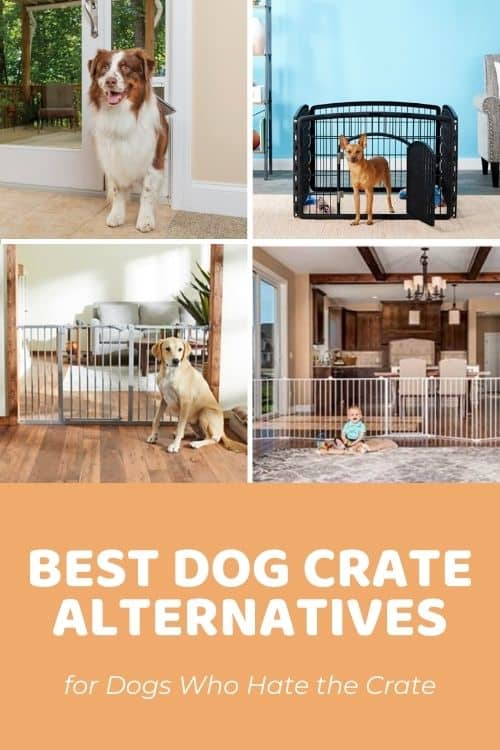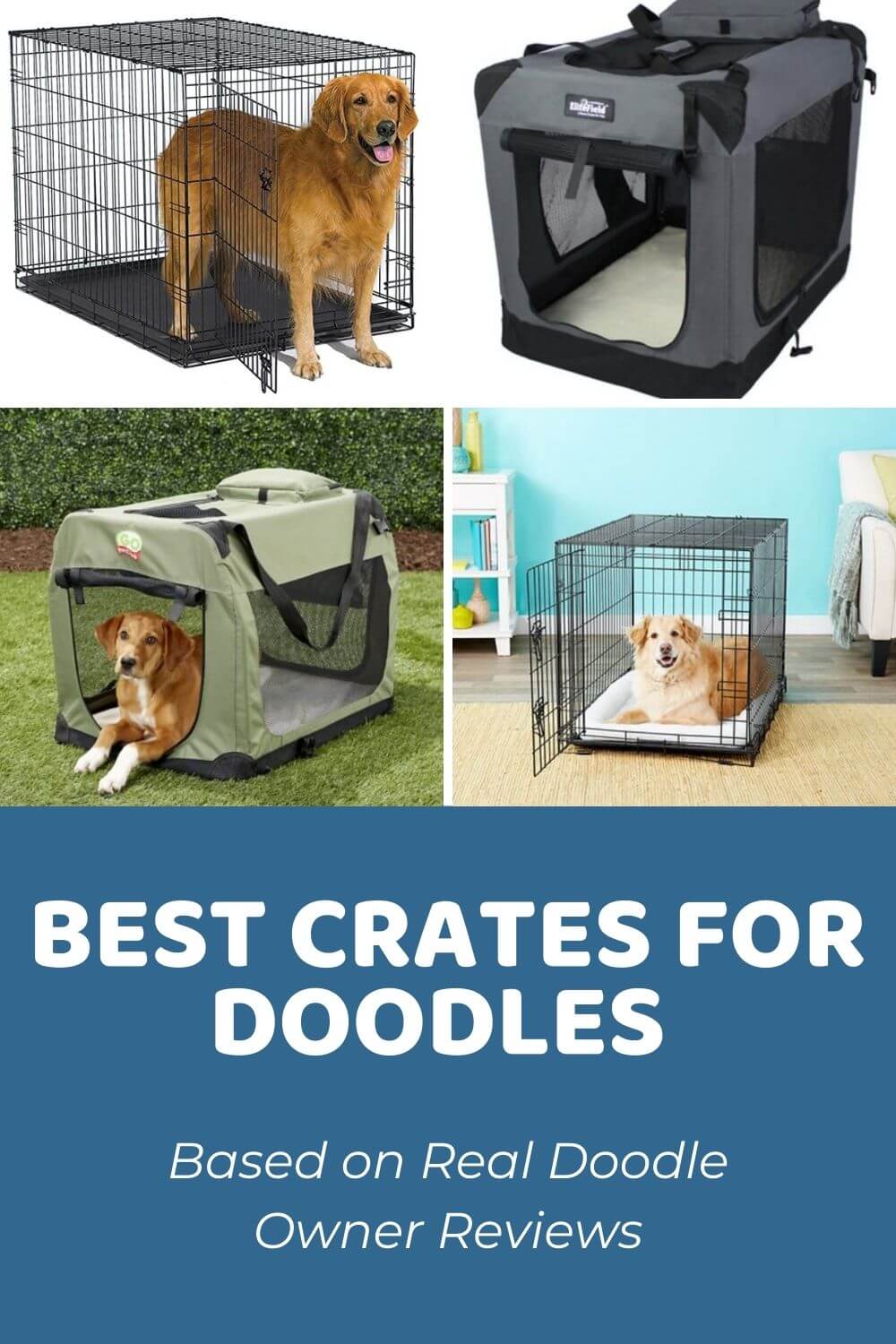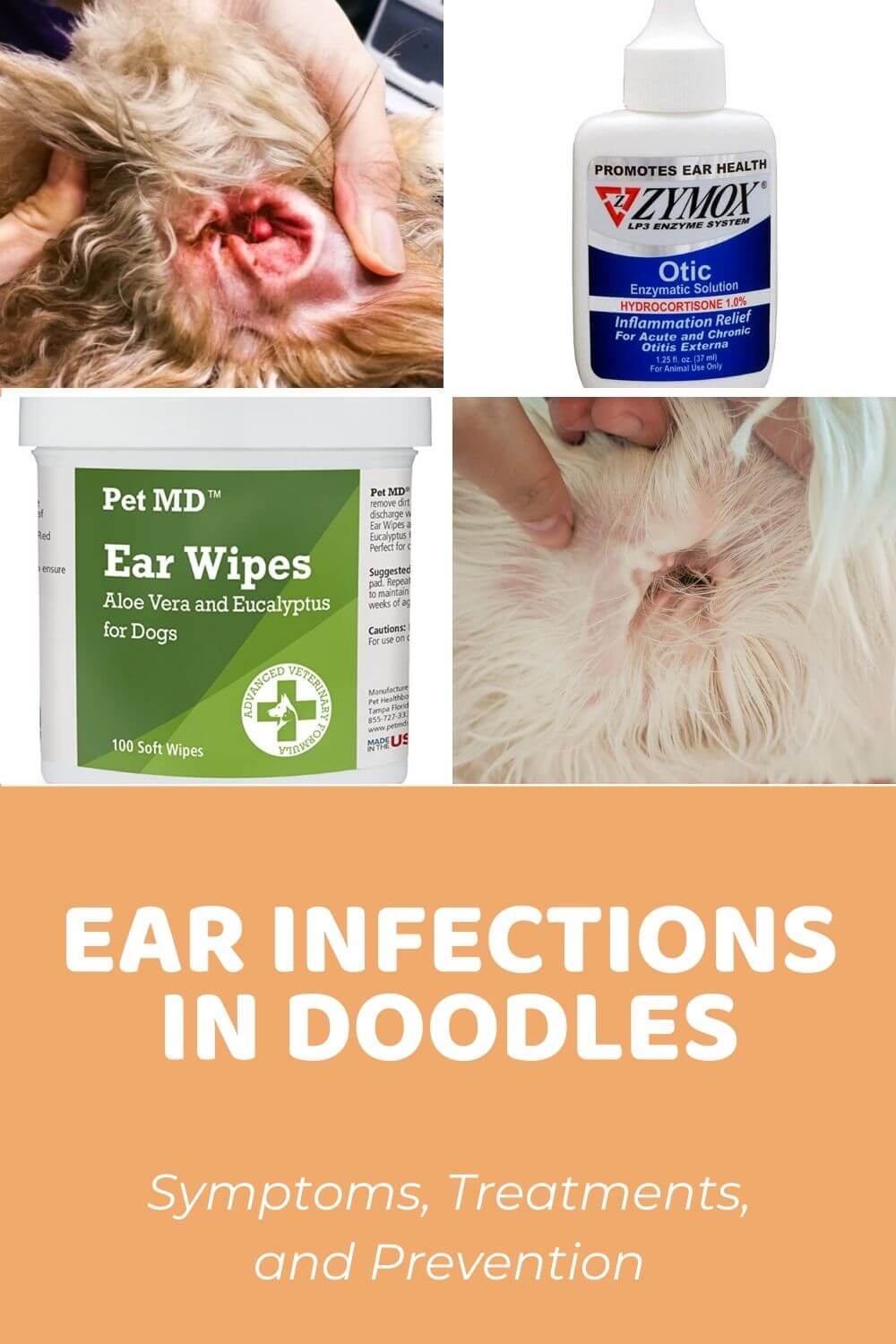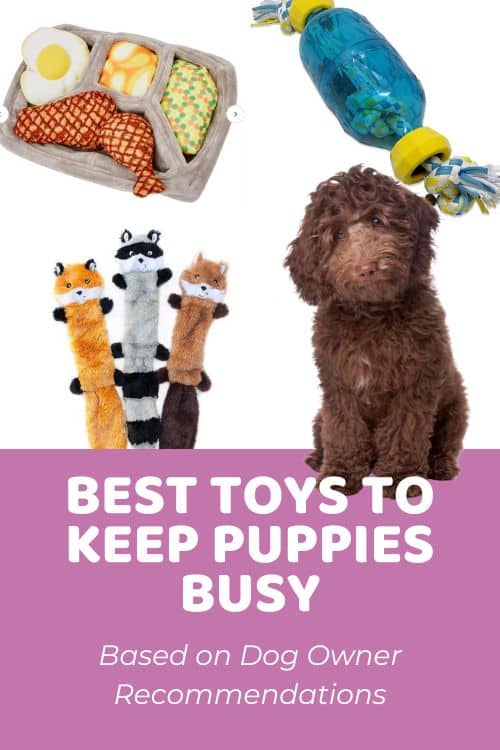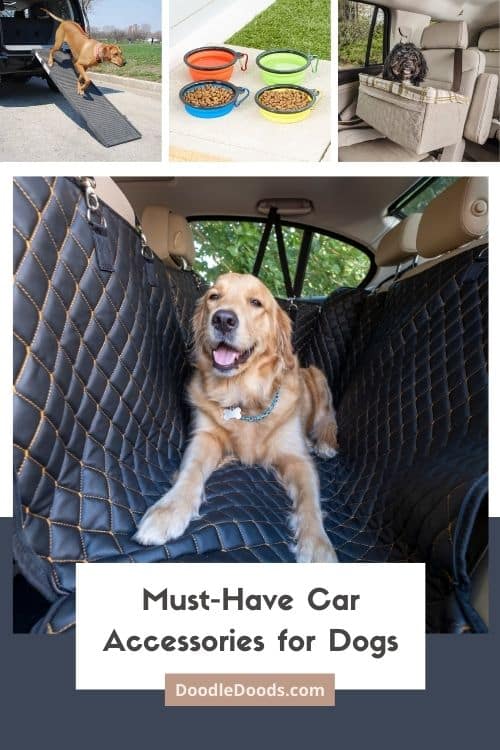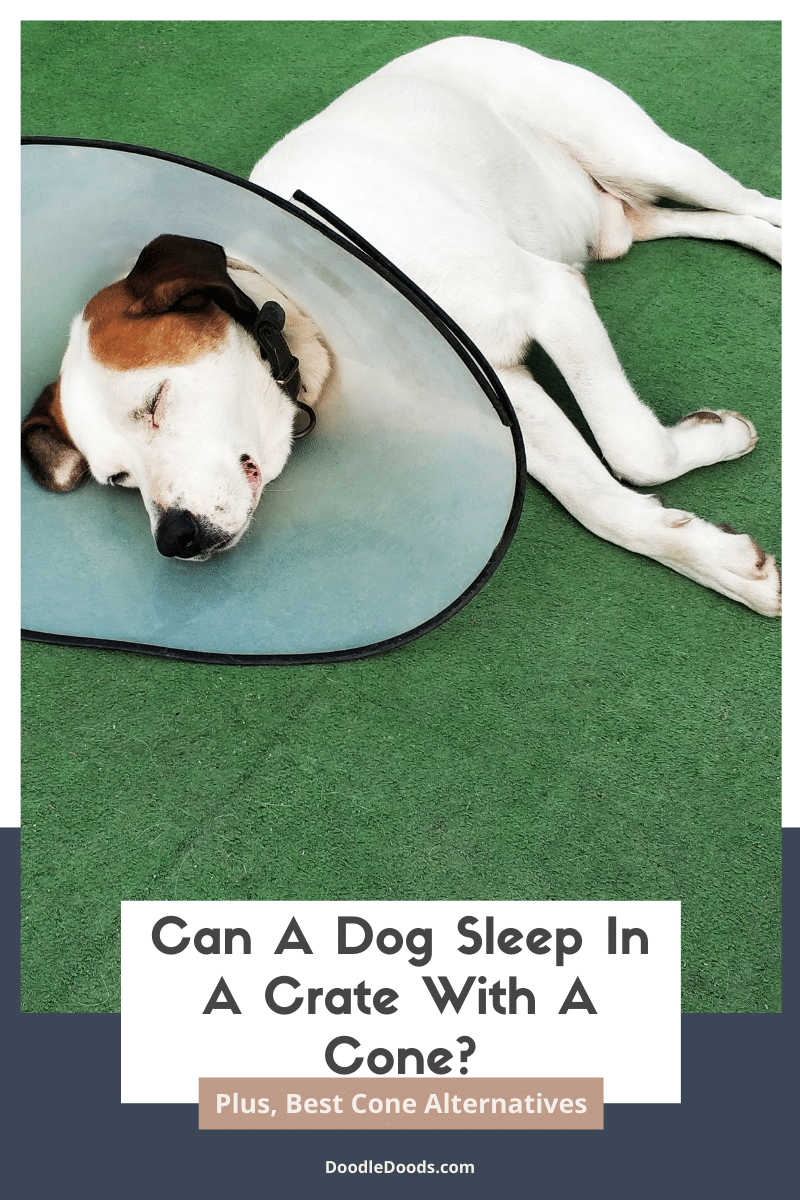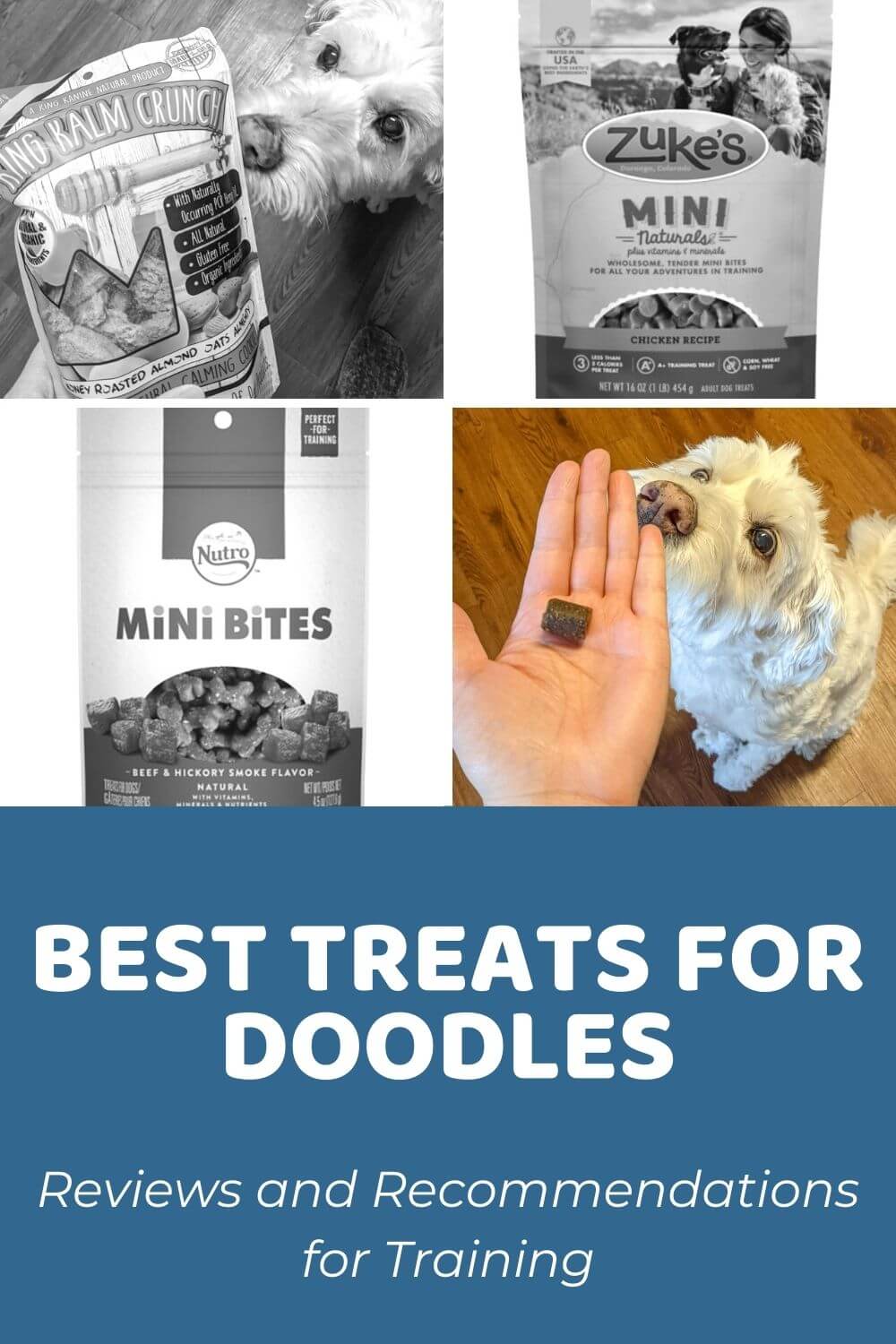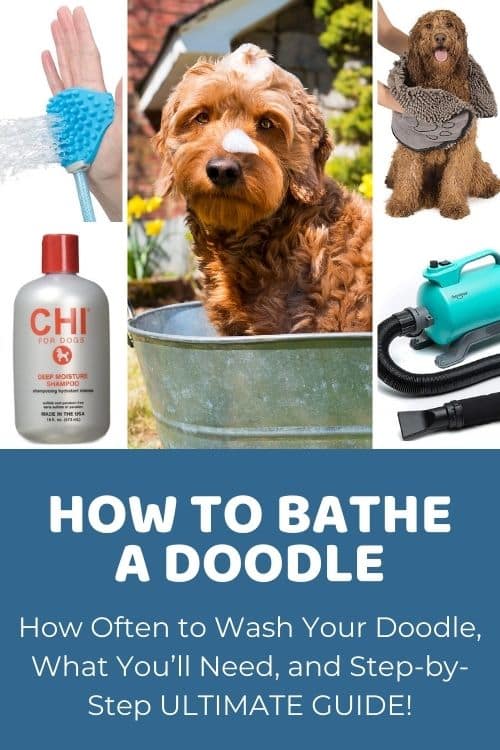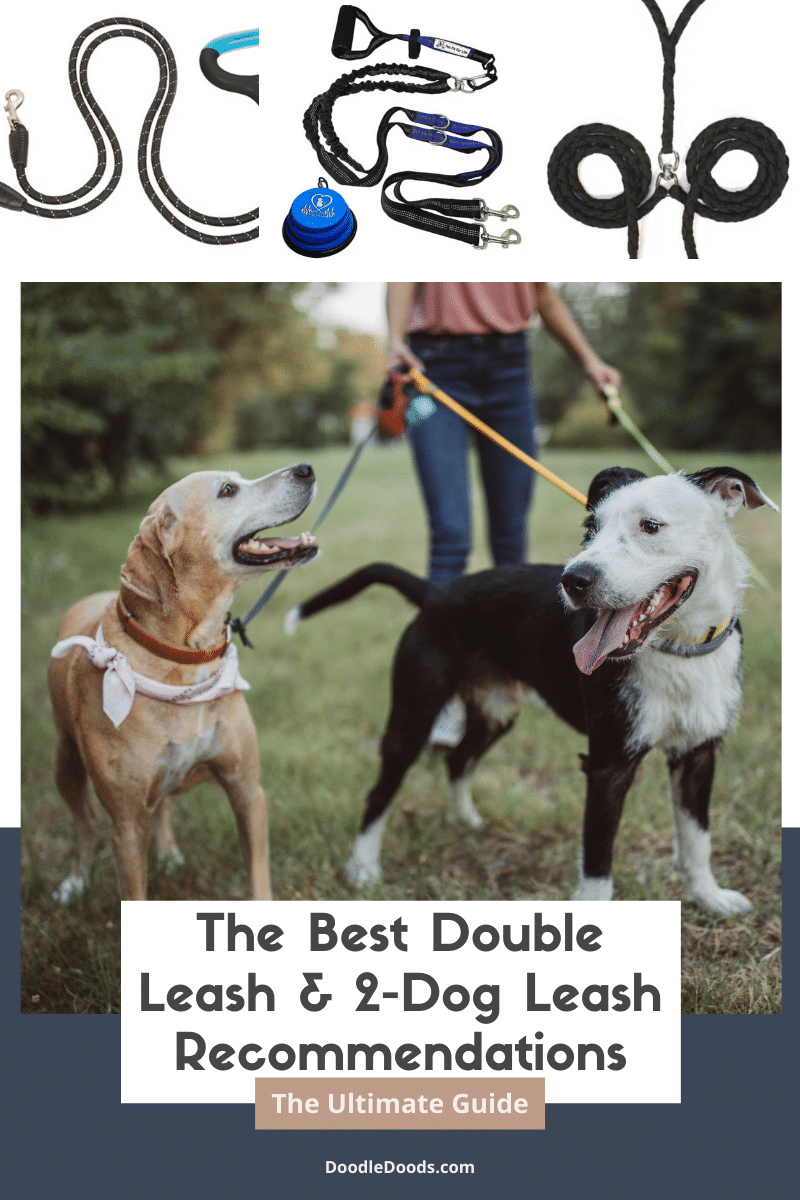Crates are an entirely personal choice – some dog owners use them, others do not. Those who use them generally love them as they can often make life a lot easier in many ways. But for whatever reason, some dogs are just not all that keen on spending time in a crate. So, if you’re looking for dog crate alternatives to keep your dog safely contained at night or while you’re away at work during the day, keep reading.
Top Reasons Dogs Don’t Like Being Crated
First things first, you want to be sure that the crate is the right size for your dog – can they comfortably move around inside? Then, you should place their bed and belongings inside to help them feel more at home. Finally, check that the crate is clean and doesn’t have a strong or bad smell.
If you’ve done all of these and your pup is still not interested, you may find yourself pulling your hair out in frustration.
Before throwing the crate out with the bathwater (or something like that), take the time to figure out why your pup has a problem with it. Knowing the reason behind the issue can really help with overcoming it.
Getting a new puppy used to a crate can just take a little time. For tips and tricks to help with this, check out our dedicated article on the topic.
If, on the other hand, you have adopted an adult dog, you will need to consider their history with crates. They may have had some bad experiences of them in their previous home or homes. For instance:
- It may have been used as a tool for punishment – a place to shut them away when they did something wrong or when they weren’t wanted around.
- They may have been crated for extended periods. If so, your pal may associate the crate with feeling hungry or thirsty or having to soil their bedding – all traumatic experiences.
- The crate may remind them of negative events such as trips to the vet.
Alternatively, the issue could be with the crate itself. It might look scary and intimidating or, if the crate is second-hand, it could still smell like the previous tenant. This will make your dog less inclined to spend time inside the crate because it simply won’t feel like their space.
How You Might Change Their Mind
Get Your Dog Feeling Calm
Introducing your pooch to the crate is best done when they are relaxed. For this reason, you might choose to do it after a long walk or a fun game of catch. At this point, their bladder will be empty, and they will be looking to enjoy some snacks or curl up in their bed for a lovely snooze.
Position The Crate Carefully
The location of the crate is another crucial detail to consider. You want it centrally located in the house so that your pup doesn’t feel shut away from family members, yet tucked up in a nice little corner where they can enjoy some peace and quiet. Check that there is no weird smell or cold draft. If your pooch has a special place that they like to sleep, that’s likely to be the perfect spot for their crate.
Make The Crate Appealing
Your dog’s first impression of the crate is super important. If they think it looks or smells unpleasant, then convincing them otherwise will be that much harder. Make sure that it is thoroughly clean and nicely set up with their belongings inside. It might also help to rub their bed around the inside and outside of the crate to make it smell familiar to your pup.
Give It a Little Time
Allow your pet time to investigate the crate with the door open. Be patient and never force your dog into the crate if they don’t want to go. A single bad experience could quickly put them off for life.
Encourage, Praise and Reward
When your pal starts venturing inside the crate, bring on the positive associations. Place food, valued toys, and treats inside and let them come and go as they please for a while. Offer verbal encouragement and cuddles when they spend time there. Let your dog gradually learn that their crate is an enjoyable place for them to be.
Be Prepared to Switch Things Up
If your pup is simply not warming up to the crate, there might be something about the way it looks. Never fear! Crates come in a variety of materials – wire, wood, plastic, and even material. Sure, trying different ones is definitely a pain – especially if you are ordering them online and sending them back each time. See if you can find an alternative way to test crates, e.g., by borrowing them from a friend or local rescue center.
Best Dog Crate Alternatives Based on Owner Recommendations
Sometimes, despite your best efforts, it’s just not going to happen. This is usually the case if your pal has developed a severe fear or dislike of crates. In that case, chances are there’s nothing to be done. This is when you are going to need to start exploring other options.
Pet Gates and Barriers
You’ve tried everything above and more, you’ve given your pet time to adapt and to explore the crate for themselves, but nothing is working. The problem could be that your pet simply doesn’t like to be shut up in a small space.
Configurable gates and barriers are different from crates. They allow you to block off certain areas of the house, such as bedrooms and bathrooms, keeping your pup safe without them feeling confined. We recommend:
Frisco Auto-Close Pet Gate
Available in extra wide to suit larger door frames and extra tall for pups who can jump, Frisco’s Auto-Close Pet Gates are just what you need to easily section off the house. Made with durable steel but with a sophisticated black finish, these gates can easily blend in with the décor of your home, all while keeping your doggo safe from harm. The pressure-mounted system, coupled with the lightweight design, makes the gate easy to put up, remove and move to other doorways in your house as needed.
Frisco Auto-Close Pet Gate
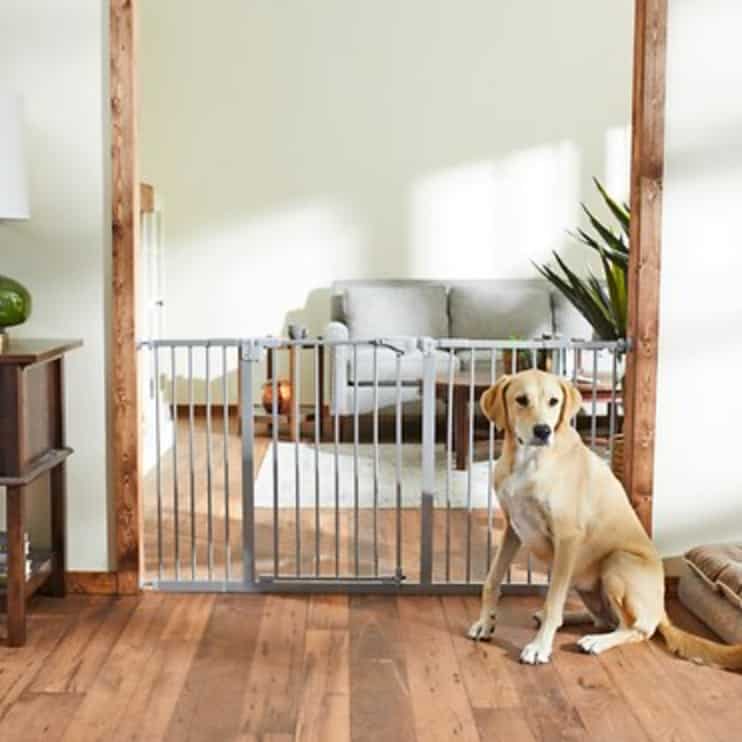
Regalo 4-in-1 Play Yard Configurable Gate
The ultra-versatile Regalo Configurable Gate can also be used to block off different rooms of the house and so much more besides. The gate covers 192 inches when fully extended, making it effortless to divide even large, open-plan rooms into two distinct spaces. Moreover, the sections can be arranged in a circle to create a little ‘playpen’ space (see below) for your pooch. The panels are all-steel construction and set out accordion-style for enhanced portability and a variety of other configuration options.
Regalo Super Wide Baby Gate and Play Yard
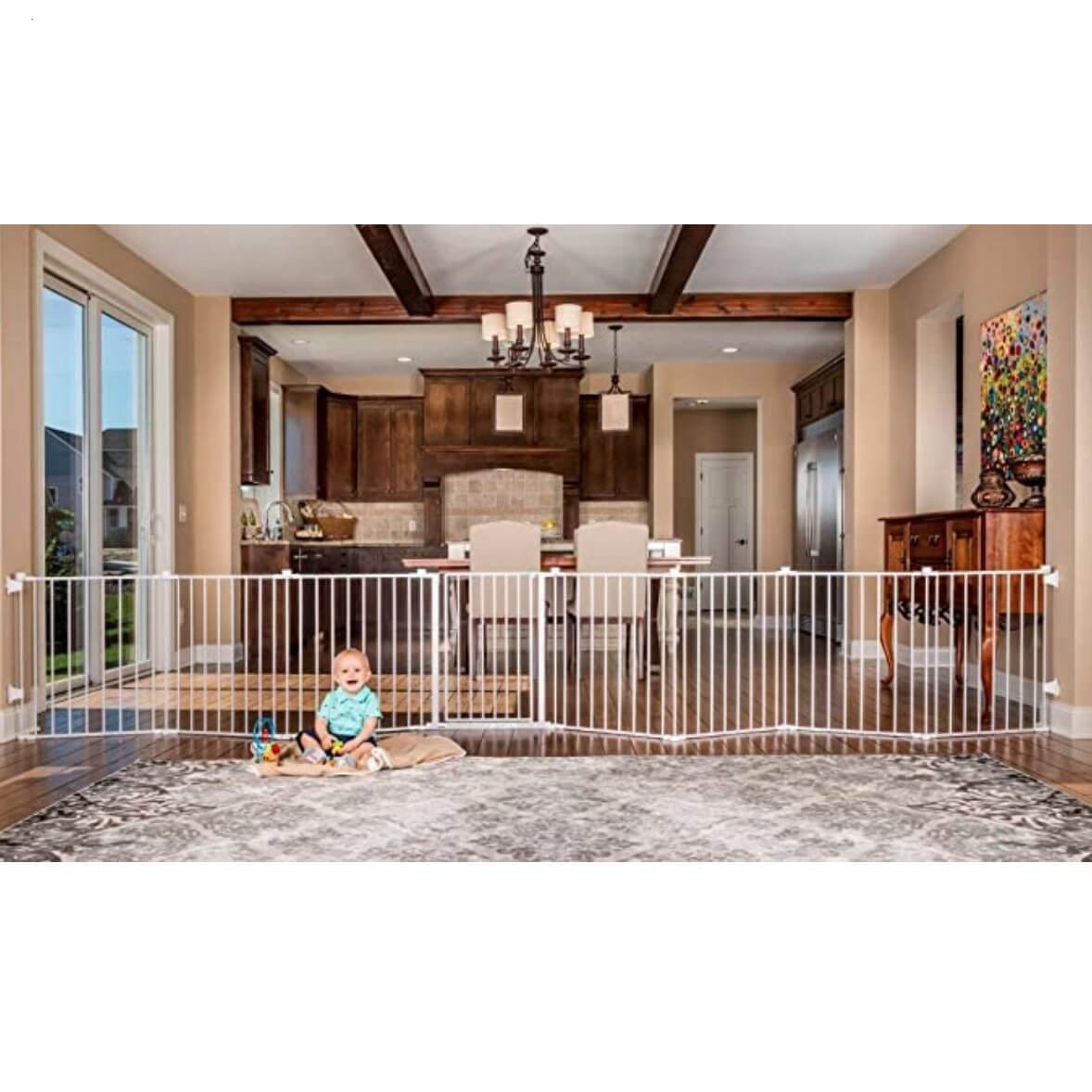
Dog Doors
Dog doors tend to be less about confining your dog and more about enabling them to easily move between spaces (usually outdoors and indoors) without the need to leave the door open. The benefit is that your pup can go outside to play and do their business as they like, so you won’t need to keep opening the door for them. We like:
PetSafe Freedom Patio Pet Doors for Sliding Doors
This super easy to install door is great for use with sliding glass and screen doors. Constructed from heavy-duty aluminum and shatter-resistant, tempered safety glass, it’s wonderfully safe and effective. It also features an energy-conserving UltraSeal flexible flap system that will keep weather outside where it belongs. As the door simply slots into place, fitting and removing it is an absolute breeze. Alternatively, you can simply make use of the hard panel, which can be slid in front of the flap to close off the door as and when desired.
PetSafe Freedom Patio Pet Door for Sliding Doors
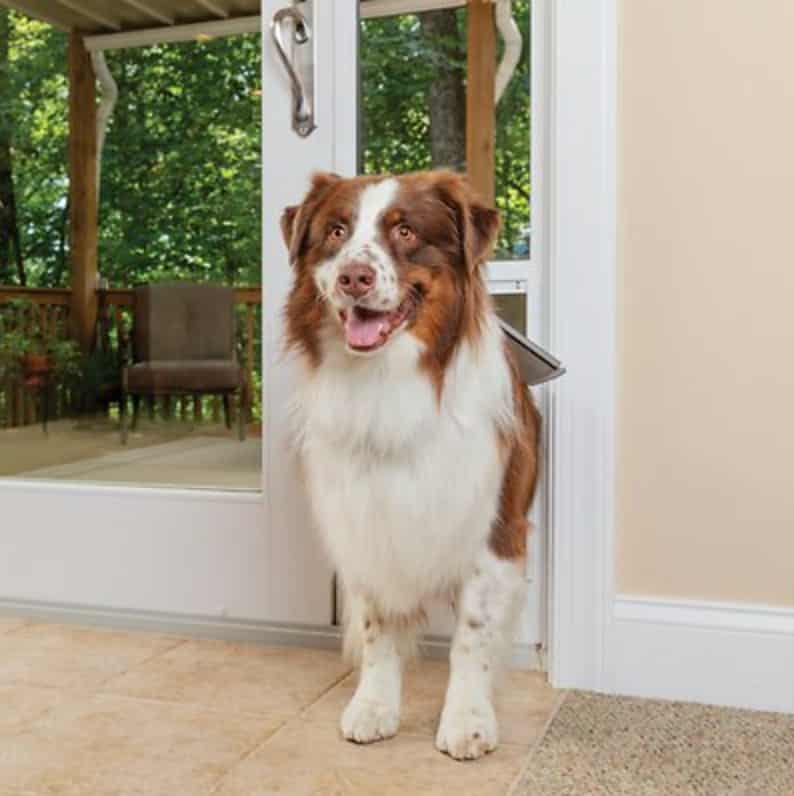
Dog Playpen
If you have the space for it, an indoor playpen could be another excellent choice. Just take care to get one sturdy enough so your dog can’t knock it down and high enough so that they can’t just jump right over. You can’t go wrong with:
IRIS 4-Panel Plastic Exercise Dog Playpen with Door
The most similar option to a crate, the IRIS Plastic Exercise Dog Playpen, is simply a crate without a roof. For this reason, it offers all the same benefits, but chances are your doggo will take to it more easily because it doesn’t feel so closed in. It can be used anywhere – indoors and out and is very easy to move. (Although, it features non-slip feet so this won’t be the case for your dog!) The durable, heavy-molded plastic will last for years.
IRIS 4-Panel Plastic Exercise Dog Playpen with Door
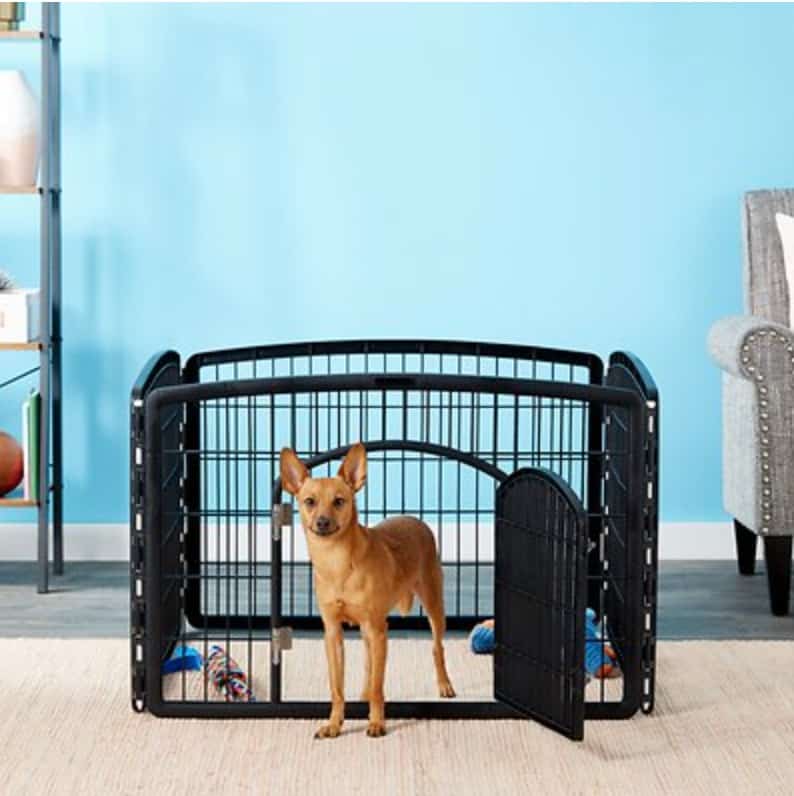
Fenced Yard
If you live in a temperate climate or have an outdoor shelter for your pup, you might consider leaving them outside while you are away from the house. The advantage of this is they can happily run around and play and do what they need to do without any fuss.
However, you will need to ensure that your dog will be safely contained in a suitably fenced yard that there is absolutely no chance of them escaping from. This is not always the easiest thing to achieve, especially if your pup loves to dig, chew, or otherwise break through things and run.
Build up to leaving your dog alone outside for the whole day by putting them in the yard for increasing periods to ensure they can’t get out. Though, you might want to invest in a doggy GPS tracker just in case.
Doggy Daycare or Pet Sitting
Suppose you’ve gone through all the options, but they are just not going to work for you and your dog. You’re simply not comfortable letting them have free roam of the house while you are out at work. In that case, you may have to consider either getting someone in to keep an eye on them or shipping them out to daycare.
While a more costly option, both of these have a range of benefits. As well as keeping your pup safe, a dog sitter could also help with exercising and feeding them, and doggy daycare is great for boosting training and socialization.
Under the watchful eye of a professional, your pet will come into contact with all different playmates. This could also reduce the amount of time you need to spend exercising them. With all the excess energy spent, they will come home ready for cuddles.
Thorough Training
Effective training strategies can help your dog to behave well in the home without a crate. Pet parents who aren’t big fans would likely suggest this as the best approach. The only problem is, it can take a little more time and a lot more effort.
Positive reinforcement can help your dog understand appropriate at-home behaviors and the areas of the house they can spend time in. So rather than punishing wrong actions, instead praise and reward the desired ones. We recommend the Baxter and Bella Online Puppy School for more on how to do this.
Preventative measures are also necessary for encouraging good behaviors from your pup. Don’t leave a tasty ham out on the counter while you are gone, for instance – who could resist that? Likewise, lock away anything that may be used as a chew toy and ensure the garbage is securely stored, too.
Frequently Asked Questions About Crates and Crate Training
Is a dog crate really necessary?
Most canine experts would recommend crate training for the array of benefits it has. However, at the end of the day, it’s a personal choice. If you feel up to training your pup to behave across the whole house without using a crate, then that’s great too.
How can I keep my puppy safe without a crate?
The best way to keep your puppy safe without using a crate when you cannot supervise them is to confine them to specific spaces within the house. A barrier or gate is a great way to do this as it enables them to see what’s going on and will save your door from scratches.
Can I use a playpen instead of a crate?
Some dogs may prefer a playpen to a crate, as it won’t feel so closed in without a roof. If this is the case, it’s a great alternative with all the same functionality as the crate. Just be sure to get one that is both high and sturdy enough to not allow your pet to escape.
If you’re looking to crate train your dog only to find that they refuse to cooperate, don’t worry – there are plenty of other options to consider. Gates, barriers, dog doors, playpens, and fences can all be used to set up a designated space in your home for your dog. Alternatively, you might consider getting a pet sitter, sending your pup out to daycare, or simply training your pal how to behave while having the whole run of the house. You might have to try a few different things – but you’ll certainly get there in the end.
Learn How to Care for Your Doodle Puppy!

Perfect for first-time Doodle parents, get ALL your questions answered, including questions new Doodle parents don’t even think to ask.
Plus, get $700 worth of Bonus Materials for FREE, including:- Doodle Parenthood Community and Support Group ($190 value)
- Doodle Puppy Growth Tracker ($20 value)
- EMERGENCY Cheatsheet: When To Call The Vet Immediately ($50 value)
- HELP! Button ($145 value)
- And SO MUCH MORE!

